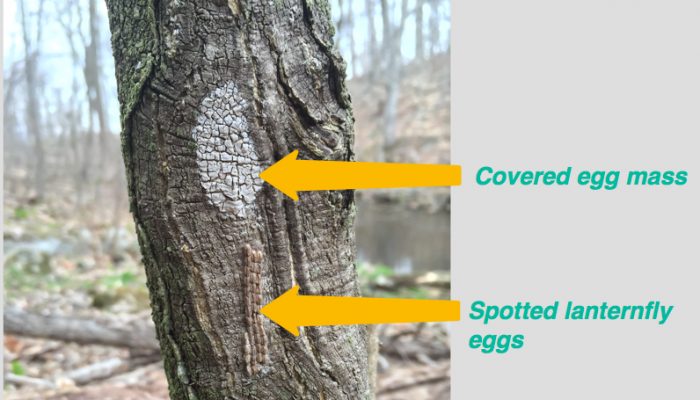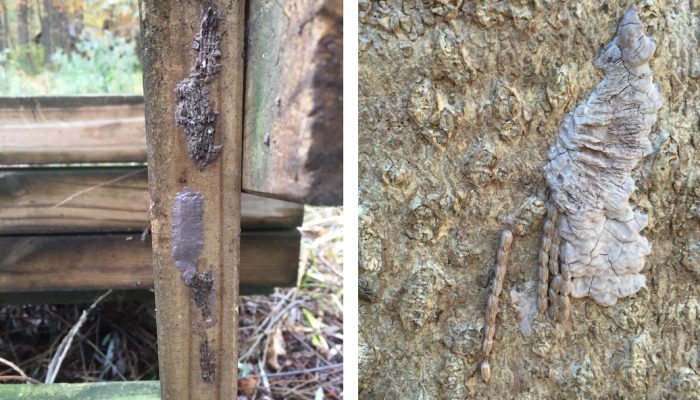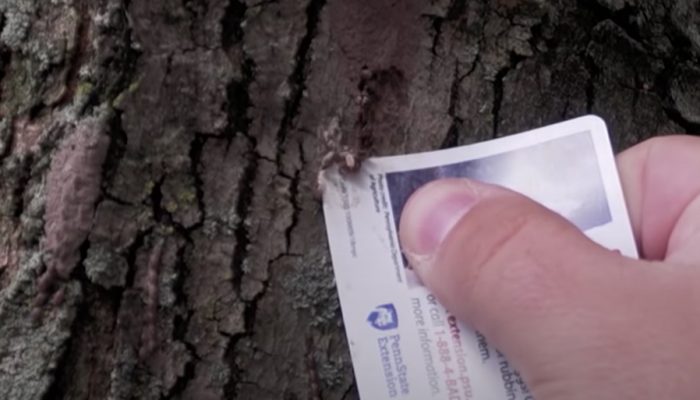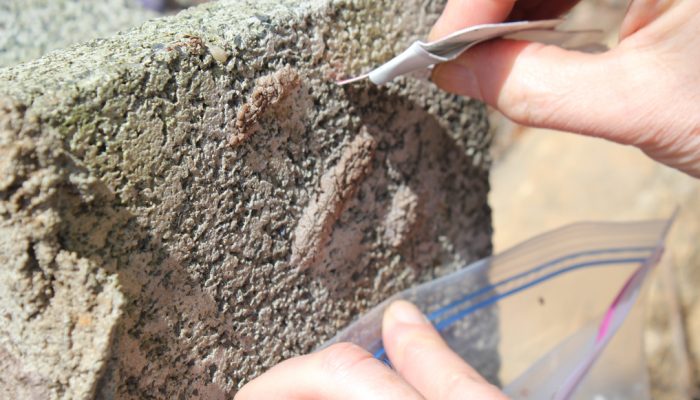
The spotted lanternfly is an invasive insect that first appeared in our area in 2014. The lanternfly is harmful to many important plants and trees. Learn how to identify the lanternfly and what they’re such a threat.
Starting in October, Lanternflies lay their eggs. This is your chance to help limit next year’s lanternfly population!
Check out our guidance below to learn:
- What the Eggs Look Like
- Where to Find Them
- How to Destroy Them
Identifying + Destroy Spotted Lanternfly Eggs
WHAT TO LOOK FOR
- Egg masses vary in size.
- The masses are typically an inch long by 3/4 of an inch wide.
- The female secretes a white, waxy substance over the eggs to protect the mass.
- When dried, the egg masses they look like light grayish splotches of mud, cement, or lichen.
- Each mass holds 30 to 50 eggs.

WHEN TO FIND THEM
- You can find spotted lanternfly egg masses from September to June.
WHERE TO LOOK
Lanternflies lay eggs in areas protected from wind and harsh winters, such as:
- Tree trunks
- The undersides of tree branches
- Rocks
- Outdoor sheds and equipment
- Any surface that is sheltered

HOW TO DESTROY THEM
Once you’ve found lanternfly egg masses, destroying them is easy!
OPTION 1: Crushing
- Crush the eggs by dragging a credit card, putty knife, or another hard implement across the egg mass.
- The eggs will pop as you press down. You may see liquid released as the eggs underneath burst.

OPTION 2: Scraping
- Fill a plastic baggie with a few ounces of rubbing alcohol or hand sanitizer.
- Scrape the eggs off the surface with a credit card, putty knife, or butter knife into the bag.
- Make sure the eggs come in contact with the alcohol/sanitizer. The eggs must remain in the alcohol solution.
- Take the bag, place it in another bag, and discard it.

View a Penn State Extension video on how to kill the eggs.
NOTE: Some egg masses high up in trees will be unreachable while other egg masses may be well-hidden from view. This means that you may very well still see Lanternfly nymphs and adults next year — but destroying all the egg masses you can find will significantly help to reduce their spread!
